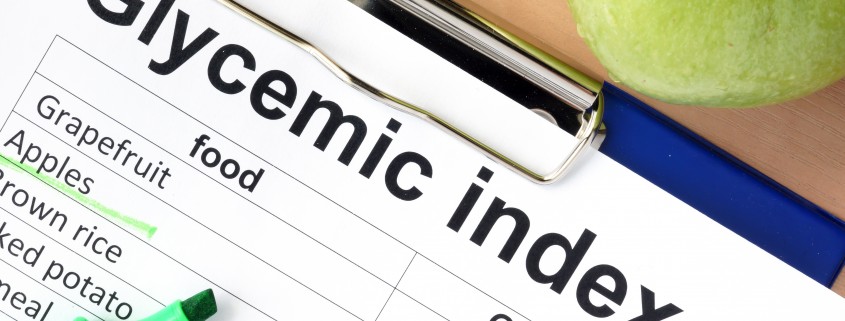The Glycaemic Index
Unlike many diet plans that you come across, low Glycaemic Index (GI) is not a fad and there are no medical journal articles or scientific studies that say it isn’t a healthy dietary concept. Eating low GI carbohydrates is a key nutrition message that goes hand-in-hand with other healthy eating guidelines such as eat less saturated fats and eat more fruit and vegetables.
The Glycaemic Index was devised when researchers considered in greater depth the dietary recommendations for diabetics; which at that stage was to eat more complex carbohydrates (starch) because they took longer to process and digest than simple carbohydrates (sugar). What the researchers discovered was that the effect of a carbohydrate on blood-glucose levels was not determined by the sugar or starch.
GI is a ranking (from 1 to 100) which measures the effect of a food on your blood-glucose level over the two hours after the food is eaten.
When you consume carbohydrates; the blood-glucose rises and as your body produces insulin it transports the glucose out of the blood and into the cells of the body which then causes a fall in the blood-glucose level. When eating high GI foods, you get a sharp spike in blood glucose followed by a dramatic drop whereas with a low-GI food, there is a slower and steadier rise and therefore, fall in the blood-glucose level.
Low-GI foods promote better health
Research has shown that sharp ‘spikes’ in the level of glucose in our blood (caused by high GI type foods) are damaging to our arteries, and they promote the release of far too much insulin.
Eating low-GI foods helps to avoid those spikes and the resultant dramatic falls in blood-glucose so you get a much steadier stream of energy. This will, therefore, reduce your risk of heart disease and other chronic diseases that are implicated by those blood-glucose fluctuations.
Low-GI foods contribute to weight control
There are 2 main reasons why high GI foods make it difficult to lose weight or manage your weight.
Firstly, the resultant ‘crash’ from a glucose spike stimulates hunger because of the dramatic drop in glucose. This leads to you being hungry again within 1 – 2 hours after eating. By eating low GI foods you feel fuller for longer and are, therefore, not as likely to go searching for additional food every two hours.
Secondly, insulin is a storage hormone that stores nutrients for later use by the body. A high-GI diet causes a lot of insulin to be produced and when you have too much insulin in your body too much of the time, it makes it easier to store fat and harder to burn it.
Applying the low-GI concept to your diet
It is not necessary to know the GI value of all foods. Healthy foods such as fruits and vegetables, should be eaten daily regardless of their GI. Simply knowing the low, medium and high varieties of the major carbohydrate foods in your diet such as breakfast cereals, breads, rice and pasta, and choosing the low-GI options is sufficient to produce healthy benefits.
If you simply can’t go without some high GI favourites, simply serve a small portion and combine with a low GI food. This will create an overall lower GI load, i.e. the overall GI content of the meal. Simply balance your meal with protein, vegetables and predominantly low GI carbohydrates.
The GI table
- Low GI – 55 or less
- Medium GI – 56-69
- High GI – 70 or more
To find the GI of various foods, go to: http://www.glycemicindex.com/





